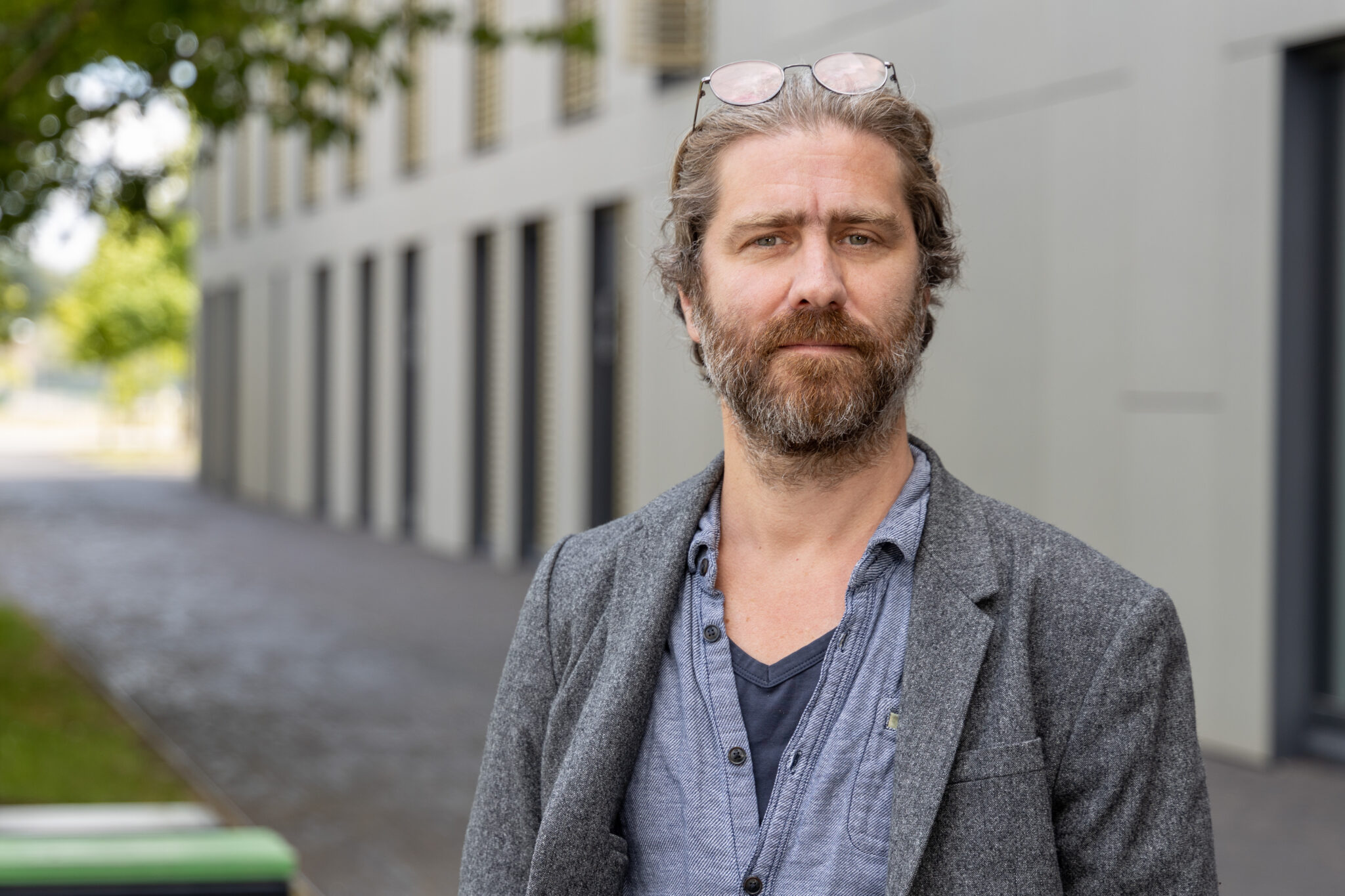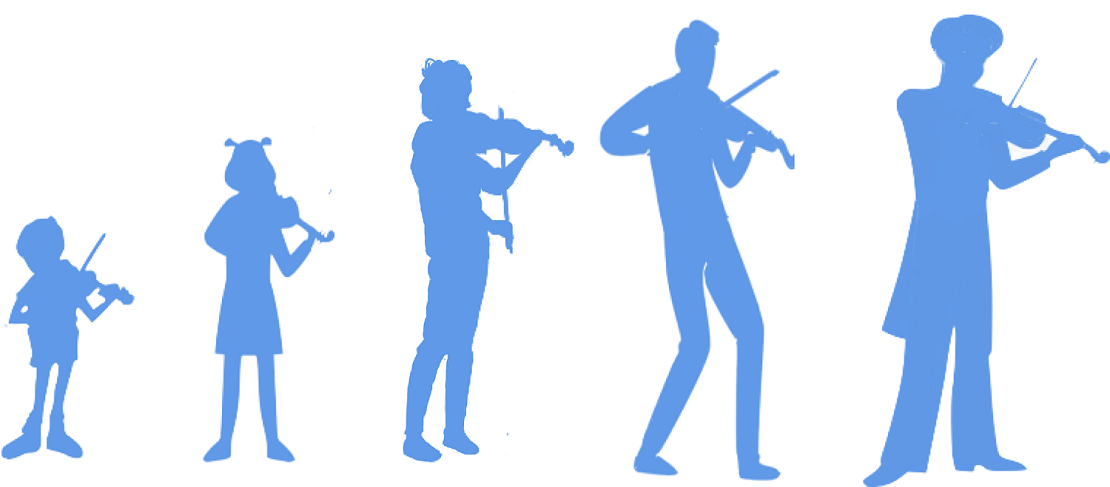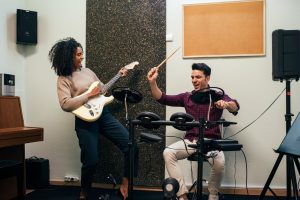Learn your notes, practice your rhythm, strike the notes: traditional music education relies on an established approach of classical repertoire, a score based and master-student dynamic. While this wields numerous skilled musicians in the world, Digitalisation, innovations in pedagogy and latest research findings are having a transformative effect on the way music is taught.
The University of Luxembourg is determined to be at the forefront of this evolution. At the Bachelor in music education, a team of enthusiastic scholars and musicians are implementing a new teaching strategy based on three pillars: creativity, embodiment and technology. In this interview for the International Music Day, Study director Luc Nijs illustrates each pillar.
“The strength of this young Bachelor is that it lies at the crossroads between musicology and music education,” explains Prof. Luc Nijs. “Being embedded in a university means we can combine the best assets of Luxembourg’s Conservatoires and the latest scientific insights in education, to foster new ways of teaching music and train reflective music practitioners.”
It takes two to tango: fostering student creativity
“There are two aspects at stake here: teaching for creativity and creative teaching.
The question we ask ourselves is, how can we train students to unleash their creative processes, especially if they are used to classic training methods? Autonomy and creativity are inextricably intertwined. Hence, students need room for improvising, exploring, experimenting in order to develop their creativity. At the same time, unbridling their creative capacity gives them more freedom in their reflection and expression. This is rather unchartered territory in music education.
Our approach is to be student-centered and give space for non-linear pedagogy. Last year we introduced a new course called ‘Collaborative creative music making’, during which students receive a task that requires them to improvise and experiment. Teachers facilitate the course, but it’s the students who are leading the creative process. This is such a surprise for many students! They must get out of their comfort zone. This is where they can discover their own creative capacity.
We have a fantastic opportunity here. In parallel to their creative and pedagogical training, students learn how to do research, to reflect and compare different perspectives. In my view, this academic growth is paramount to empower future teachers.
Ultimately, we aim to train reflective and free-thinking practitioners. Music education should be a space in which you learn to be free, yet reflective in your thinking. You could compare this to the famous movie “Dead Poets Society”, in which Prof. Keating explains that he wants to educate free thinkers; this is exactly what we try to achieve.
Technology is not the only revolution in music education. More recently, new aspects come in play such as embodiment – or the role that the body plays in learning, expressing and performing music.”
Novel technologies chime in for music education and creativity
“Our goal is to use new digital equipment adequately to develop music pedagogy, to drive non-linear creativity and student participation.
I believe in the transformative power of technology in education and their mutual influence: technology makes us reflect about the methods and impact of teaching, while pedagogy is needed to design and use technology in a meaningful way.
But the point is not to celebrate all music technology in our line of work. Currently, many music education technologies are still about monitoring performance: some show you exactly where you didn’t strike note or rhythm perfectly, or where your breathing can be improved. These are worthy tools for musicians looking to perfect their art, but what we aim for are tools to learn and create differently, such as visualising aspects of the music or what we create.
There is a strong association with the concept of embodiment, the role that body and movement play in learning and expressing music. Research into this area will further feed into our teaching at the Bachelor, while our students can learn ways to use physical activity in their future classes. The Music Paint Machine for instance allows students to use their music and movement to recreate their music in a digital painting. “
March to the beat of your own drum: the body in music education
“Embodiment in learning is a fairly underutilised concept in music education. And yet, studies have shown that learning and creating music can be enhanced by physical activities. Research by O’Dell and Joseph or Dalcroze’s practice-oriented methodology have shown that musical activities with movement help children in diverse aspects such as maintaining a tempo, recognising patterns or rhythm. This also affects teachers, as their body language and movement are part of their communication. According to an embodied music cognition perspective, physical involvement with music shapes the way we perceive, experience, understand and learn music. Through movement, a stream of sounds is transformed into a meaningful experience.
‟ We don’t just experiment embodiment in the classroom, we also research how to best integrate it in instrumental music learning. There are vast opportunities for interdisciplinary research for scientists and educators to develop methods to assess and encourage body movements in learning and expression.”

Associate professor in Early Childhood Music Education
Children are naturally inclined to move to the sound of music, creating for them a richer experience. This is a natural invitation to offer physical activities in music classes. At the University of Luxembourg, we don’t only experiment embodiment in the classrooms, we also conduct research on how to best integrate it in instrumental music learning. There are vast opportunities for interdisciplinary research in which computer scientists, engineers and educators jointly develop methods to assess and encourage body movements in learning and expression.”

Copyright: Luc Nijs
